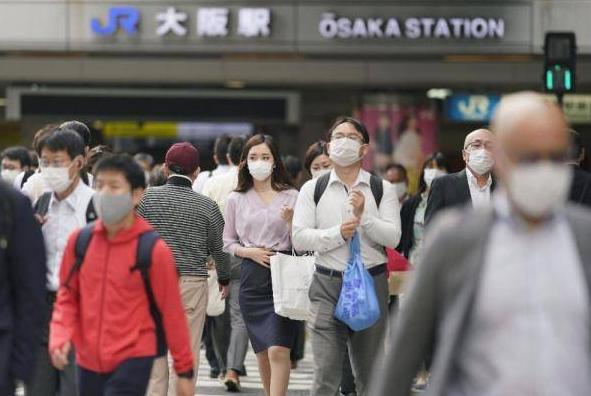On the 9th local time, Osaka Prefecture, Kyoto Prefecture and Hyogo Prefecture in Kansai, Japan, asked the central government of Japan to declare a state of emergency in response to the surge in confirmed cases of COVID-19. Aichi, Gifu and other prefectures are also considering follow-up.
On the 8th, 654 new confirmed cases of COVID-19 were added in Osaka Prefecture, setting a record for three consecutive days. Kyoto Prefecture has set a record for two consecutive days, and Hyogo Prefecture has set a new record for three consecutive days.
Yofumi Yoshimura, Governor of Osaka Prefecture, said at a press conference on the 8th that the pandemic situation in the three places was “unpredictable” and that if further measures were not required from the central government, the health care system would collapse.
Yoshimura held a videoconference with Takatoshi Nishiwaki, Governor of Kyoto Prefecture, Toshizo Ido, Governor of Hyogo Prefecture, and Yasuhiro Nishimura, Minister of Economic Regeneration of Japan, on the afternoon of the 9th, and officially requested the declaration of a state of emergency.
The capital Tokyo and the neighboring prefectures of Saitama, Chiba and Kanagawa have been in a state of emergency since the 8th, which will last until February 7.
This pandemic prevention restriction measure in conjunction with the implementation of the emergency focuses on the catering industry, requiring restaurants, bars, singing rooms and other facilities to close after 20 o’clock; encouraging home-based work, and striving to reduce the number of commuters by 70%.
For restaurants that comply with epidemic prevention regulations, the Japanese government will issue subsidies of up to 60,000 yen (about 3,738 yuan) a day.
For stores that refuse to implement the requirement of shortening business hours, they can be named and notified. The Japanese government is also considering subsidizing up to 400,000 yen (about 25,000 yuan) to restaurant suppliers.
Tokyo added 2,392 new confirmed cases of COVID-19 on the 8th, second only to the record of 2,447 new cases on the 7th.
Among Japan’s 47 prefectures, the number of new confirmed cases in 17 places hit a new high on the 8th, and 7,882 new confirmed cases nationwide that day, setting a new record for four consecutive days.
On the 8th, 78 new deaths were reported nationwide, which was also a record.
According to Kyodo News Agency, Aichi, Gifu, Akigi, Ibaraki and Yamanashi prefectures are also considering a state of emergency.
On the 8th, the reporter asked Prime Minister Saga whether to consider extending the state of emergency to Aichi Prefecture and Osaka Prefecture.
He replied: “We will assess the situation and maintain close cooperation with the local government.”
In order to prevent and control the epidemic, the Japanese government requires all people entering Japan from the 13th to submit a negative certificate of COVID-19 nucleic acid test within 72 hours until the state of emergency is lifted.



